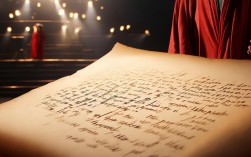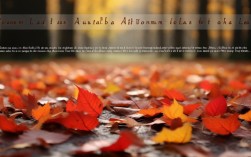英语诗歌 PPT
主题: 探索英语诗歌的魅力 从形式到情感的旅程 演讲者: [你的名字] 日期:** [日期]

幻灯片 1: 封面页
- The Beauty of English Poetry
(英语诗歌之美)
- A Journey Through Form and Emotion
(一场形式与情感的旅程)
- 视觉元素:
- 背景可以使用一张具有诗意的图片,如:
- 一本翻开的老旧诗集。
- 飘落的秋叶或雪花。
- 晨光中的森林小径。
- 一支羽毛笔和墨水瓶。
- 背景可以使用一张具有诗意的图片,如:
- 设计建议: 字体选择优雅的衬线字体,如 Times New Roman 或 Garamond,营造古典、文艺的氛围。
幻灯片 2: 目录/议程
- What We'll Explore Today
(今天我们将探索什么)
- 内容 (使用项目符号列表):
- What is Poetry? (什么是诗歌?)
- Key Elements of Poetry (诗歌的关键元素)
- Rhythm & Rhyme (节奏与韵律)
- Imagery & Figurative Language (意象与修辞手法)
- Major Forms of Poetry (诗歌的主要形式)
- Sonnet (十四行诗)
- Free Verse (自由诗)
- A Poem in Focus (聚焦一首诗)
- 设计建议: 简洁明了,使用与封面页协调的配色方案。
幻灯片 3: 什么是诗歌?
- What is Poetry?
- Definition: Poetry is a form of literature that uses aesthetic and rhythmic qualities of language—such as phonaesthetics, sound symbolism, and metre—to evoke meanings in addition to, or in place of, the prosaic ostensible meaning.
(定义:诗歌是一种文学形式,它利用语言的美学和节奏特质——如语音美学、声音象征和格律——来唤起其字面意义之外或替代其字面意义的含义。)
- In Simple Terms (:
- It's the art of expressing concentrated emotion and ideas in a highly imaginative and rhythmic way.
- (它是一种用高度富有想象力和节奏感的方式,来表达浓缩情感和思想的艺术。)
- It paints pictures with words.
- (它用文字作画。)
- Definition: Poetry is a form of literature that uses aesthetic and rhythmic qualities of language—such as phonaesthetics, sound symbolism, and metre—to evoke meanings in addition to, or in place of, the prosaic ostensible meaning.
- 视觉元素:
一张抽象的、充满艺术感的图片,或者一个由单词组成的云图,展示 "love," "dream," "hope," "memory" 等词汇。
- 设计建议: 左侧放文字,右侧放图片,布局平衡。
幻灯片 4: 诗歌的关键元素 (1) - 节奏与韵律
- Key Elements (1): Rhythm & Rhyme
- Rhythm (节奏): The beat or pulse of the poem. It's created by the pattern of stressed and unstressed syllables.
- (节奏:诗歌的节拍或脉搏,它由重读音节和非重读音节的模式构成。)
- Example: The | CAT in the | HAT. (da-DUM da-DUM)
- Rhyme (韵律): The repetition of similar sounds, usually at the end of lines.
- (韵律:相似声音的重复,通常出现在行末。)
- Example: "I have a | little | book, / I love to | look and | look." (book/look)
- Rhythm (节奏): The beat or pulse of the poem. It's created by the pattern of stressed and unstressed syllables.
- 视觉元素:
- 用一个简单的音频波形图来表示 "Rhythm"。
- 用一个简单的韵脚图,如 A A B B 的结构图,来表示 "Rhyme"。
- 设计建议: 用不同颜色标注重读音节,让概念更直观。
幻灯片 5: 诗歌的关键元素 (2) - 意象与修辞手法
- Key Elements (2): Imagery & Figurative Language
- Imagery (意象): Language that appeals to the five senses (sight, sound, smell, taste, touch). It creates vivid mental pictures.
- (意象:能调动五种感官(视觉、听觉、嗅觉、味觉、触觉)的语言,它能创造生动的心理画面。)
- Example: "The cold, crunching snow under my boots." (Sound/Touch)
- Figurative Language (修辞手法):
- Metaphor (隐喻): A direct comparison (e.g., "Time is a thief.").
- Simile (明喻): A comparison using "like" or "as" (e.g., "She is as brave as a lion.").
- Personification (拟人): Giving human qualities to non-human things (e.g., "The wind whispered secrets.").
- Imagery (意象): Language that appeals to the five senses (sight, sound, smell, taste, touch). It creates vivid mental pictures.
- 视觉元素:
- 左侧放 "Imagery",配一张感官图片的拼贴(眼睛、耳朵、鼻子等)。
- 右侧放 "Figurative Language",用简单的图标来代表三种手法(一个盾牌代表隐喻,狮子代表明喻,一个带嘴的风代表拟人)。
- 设计建议: 使用图标来帮助记忆,使页面不那么枯燥。
幻灯片 6: 诗歌的主要形式 (1) - 十四行诗
- Major Forms (1): The Sonnet
- Structure: A 14-line poem with a specific rhyme scheme.
- Themes: Often about love, beauty, or mortality.
- Famous Example: Shakespeare's Sonnet 18 ("Shall I compare thee to a summer's day?")
- 展示莎士比亚十四行诗的原文节选。
- 用图表标出其经典的韵律结构:ABAB CDCD EFEF GG (莎士比亚式)。
- 配上莎士比亚的肖像或伊丽莎白时代的建筑图片。
- 设计建议: 使用古典的边框或背景,与诗歌的历史感相匹配。
幻灯片 7: 诗歌的主要形式 (2) - 自由诗
- Major Forms (2): Free Verse
- Structure: No regular rhyme scheme or metrical pattern. It follows the natural rhythms of speech.
- Freedom: The poet is free to choose line length and structure to best convey their message.
- Famous Example: Walt Whitman's "O Captain! My Captain!" (though it has some rhyme, it's largely free) or excerpts from his "Leaves of Grass."
- 展示惠特曼《哦,船长!我的船长!》的节选,注意其不规则的换行。
- 配上一张开阔的、充满现代感的风景照片,如美国辽阔的草原或海岸线,象征其“自由”的精神。
- 设计建议: 布局可以更现代、更开放,与自由诗的特点呼应。
幻灯片 8: 聚焦一首诗 - 《咏水仙》
- A Poem in Focus: "I Wandered Lonely as a Cloud"
- 作者: William Wordsworth
- Brief Intro: One of the most famous poems in English literature, celebrating the beauty of nature and its power to bring joy.
- Excerpt (Stanza 1):
"I wandered lonely as a cloud That floats on high o'er vales and hills, When all at once I saw a crowd, A host, of golden daffodils..."
- Analysis (引导分析):
- Simile: "lonely as a cloud" - 比喻孤独感。
- Imagery: "golden daffodils" - 创造了明亮、欢快的视觉画面。
- Rhythm: 优美的四步抑扬格,读起来像在漫步。
- 视觉元素:
- 必备! 一张美丽的黄色水仙花田野的图片。
- 可以配上湖区的风景,因为这是华兹华斯灵感的来源。











